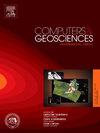利用对比学习的电磁和地声观测进行短期地震预报
IF 4.4
2区 地球科学
Q1 COMPUTER SCIENCE, INTERDISCIPLINARY APPLICATIONS
引用次数: 0
摘要
不同的观测从不同的角度提供了与地震有关的信息,有效地利用这些信息对于加强预报至关重要。现有的数据驱动方法主要依赖于串联,直接对齐从不同观测中提取的特征(例如,绝对平均值)。然而,这种幼稚的方法忽略了每个观测反映了同一物理过程的不同方面,并且没有充分探索交叉观测的相互作用。为了解决这些问题,我们提出了CL4EF,这是一个利用电磁和地声观测进行地震预报的对比学习框架。具体来说,我们引入了同步响应一致性假设,假设同一时间窗口内的不同观测值对同一物理过程的响应一致。根据这一假设,我们设计了一个对比损失,吸引来自同一站和时间窗口的观测对(正),排斥其他观测对(负),从而为下游预测任务实现跨观测交互建模。实验结果表明,CL4EF达到了最先进的性能,使AUC提高了22%。预测概率的空间分布与活动断裂带一致,表明该模型能够提取有意义的地震预报信息。因此,本研究为整合地球科学中的异质观测提供了一种可扩展的方法,并为短期地震预报提供了新的见解。本文章由计算机程序翻译,如有差异,请以英文原文为准。
Short-term earthquake forecasting using electromagnetic and geoacoustic observations via contrastive learning
Different observations provide earthquake-related information from various perspectives, and effectively leveraging them is essential for enhancing forecasting. Existing data-driven methods primarily rely on concatenation, directly aligning features (e.g., the absolute mean) extracted from different observations side by side. However, this naive approach ignores that each observation reflects a different aspect of the same physical process and inadequately explores cross-observation interactions. To address these issues, we propose CL4EF, a contrastive learning framework that leverages electromagnetic and geoacoustic observations for earthquake forecasting. Specifically, we introduce the synchronous response consistency hypothesis, assuming that different observations within the same time window should respond consistently to the same physical process. Following this hypothesis, we design a contrastive loss that attracts observation pairs from the same station and time window (positives) and repulses others (negatives), enabling cross-observation interaction modeling for the downstream forecasting task. Experimental results demonstrate that CL4EF achieves state-of-the-art performance, improving AUC by 22%. The spatial distribution of forecast probabilities reveals alignment with active fault zones, suggesting the model’s capacity to extract meaningful information for earthquake forecasting. As a result, this study contributes a scalable approach for integrating heterogeneous observations in geosciences and offers new insights into short-term earthquake forecasting.
求助全文
通过发布文献求助,成功后即可免费获取论文全文。
去求助
来源期刊

Computers & Geosciences
地学-地球科学综合
CiteScore
9.30
自引率
6.80%
发文量
164
审稿时长
3.4 months
期刊介绍:
Computers & Geosciences publishes high impact, original research at the interface between Computer Sciences and Geosciences. Publications should apply modern computer science paradigms, whether computational or informatics-based, to address problems in the geosciences.
 求助内容:
求助内容: 应助结果提醒方式:
应助结果提醒方式:


